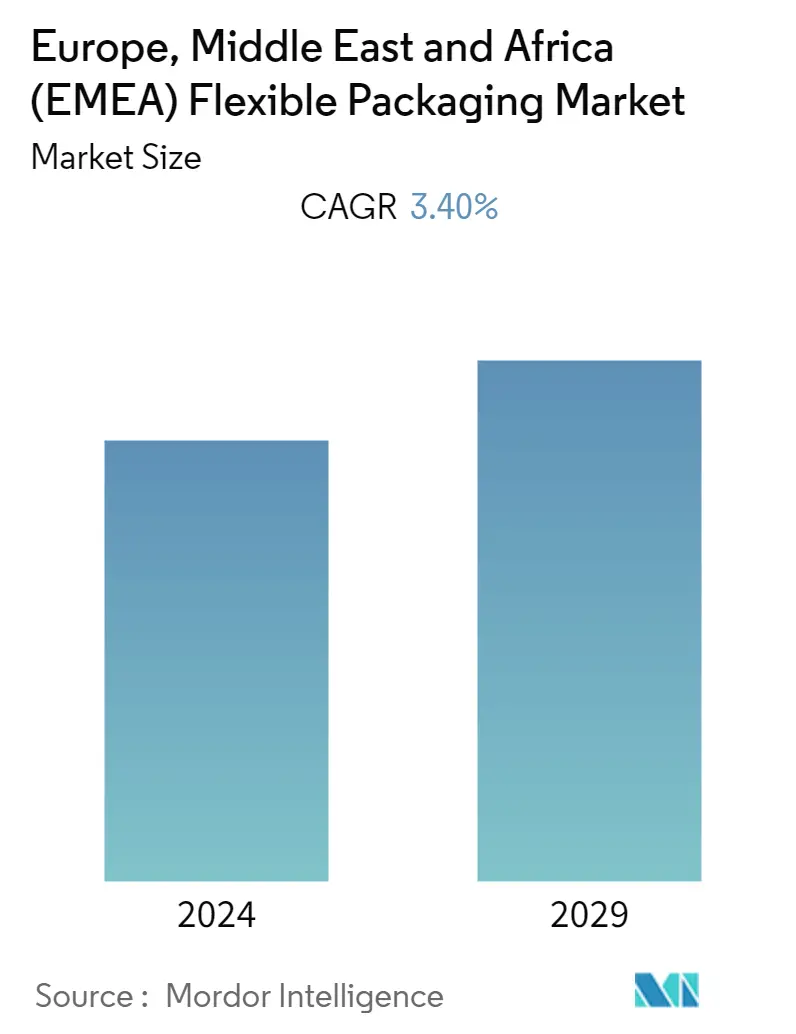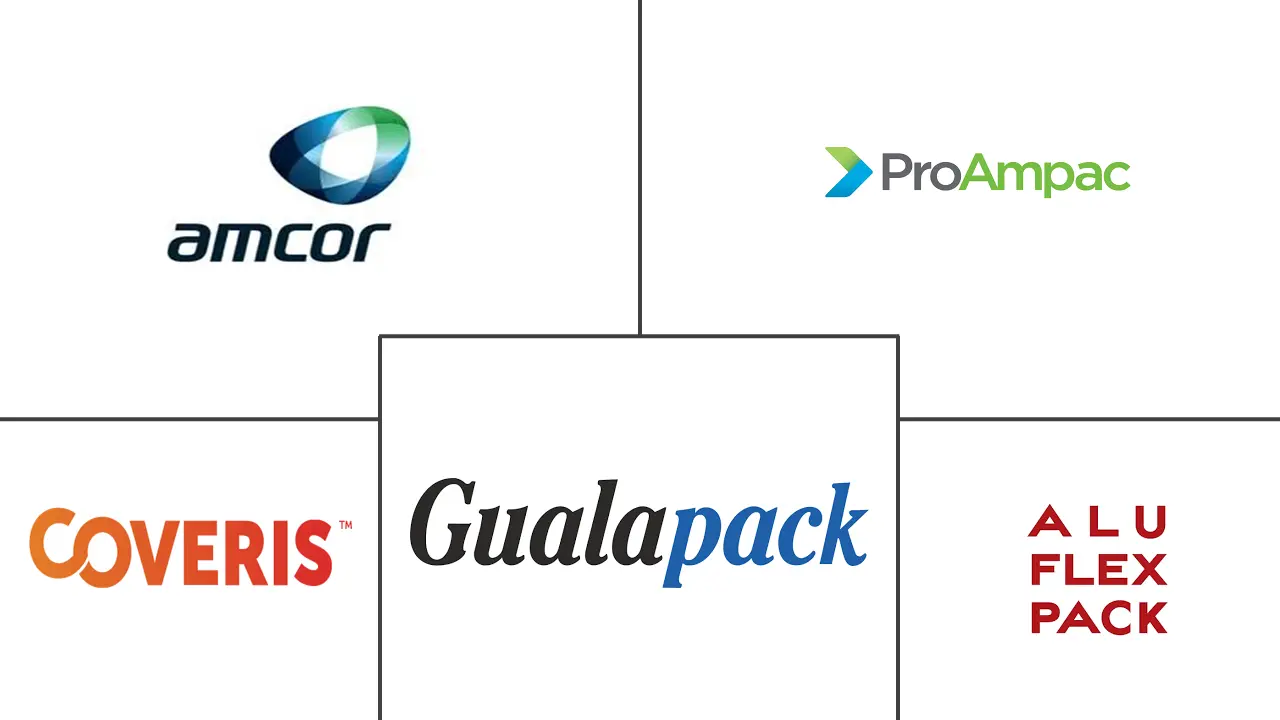Market Size of Europe, Middle East and Africa (EMEA) Flexible Packaging Industry

| Study Period | 2019 - 2029 |
| Base Year For Estimation | 2023 |
| CAGR | 3.40 % |
| Fastest Growing Market | Middle East and Africa |
| Largest Market | Europe |
| Market Concentration | Low |
Major Players
*Disclaimer: Major Players sorted in no particular order |
Need a report that reflects how COVID-19 has impacted this market and its growth?
EMEA Flexible Packaging Market Analysis
Europe, Middle East and Africa (EMEA) Flexible Packaging Market was valued at USD 67.04 billion in 2020 and is expected to reach USD 81.11 billion by 2026, registering a CAGR of 3.4%, between 2021 and 2026. COVID-19 has led to bringing back single-use plastic bags rather than accepting reusable ones. For instance, Lush, a UK-based cosmetics retailer with a high percentage of packaging-free items, is being scrutinized by customers regarding how those products are picked and delivered to them. The pandemic is increasing the price of recycled plastic in Europe, as businesses reliant on the packaging are moving away from virgin materials. The price of virgin plastic decreased partly due to crude oil's price drop.
- Stand-up Pouches are witnessing significant demand and consumer interest in the region. The renewed interest in SUPs can be attributed to various factors, including the development of new packaging machinery, which delivers much higher production and filling speeds and improvements in sealing efficiencies. In addition, other technological advances have helped improve functionality and better heat and puncture resistance of the laminate material.
- Poland continues to have relatively strong growth, with exports accounting for around one-third of production. Regional imports are sourced majorly from Western European countries and growing from Asia and the Middle East.
- The end-user segment covers market developments and trends pertaining to food, beverage, pharmaceuticals, cosmetics, and other end-users. The increasing adoption rates in different end-users are majorly driven by the reduced complexities and ease of application during the post-pandemic period.
- Healthy growth for most end-user markets, such as coffee, pet food, and fresh foods, has driven production higher, according to the Flexible Packaging Europe (FPE). The continuing demand for more product varieties from consumers supports the general trend from rigid to flexible packaging, which offers greater convenience and fits better into today's lifestyle needs.
- However, the total cost of ownership for flexible packaging manufacturing is significantly higher in the region, which further acts as a barrier to entry to new entrants. The capital-intensive nature of the market, added with the increasing competition, is acting as a major market challenge in the current market scenario.
